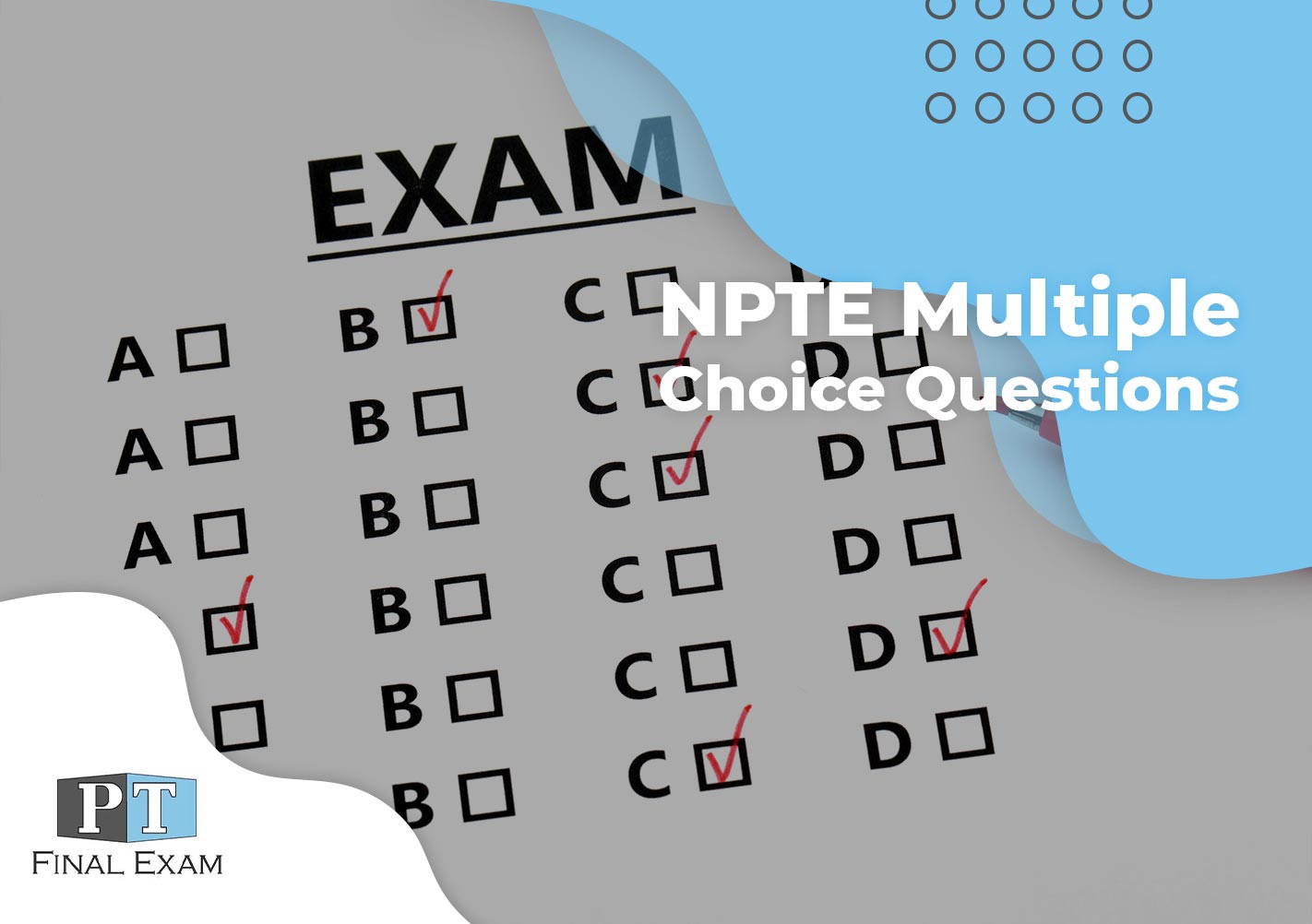 Hey everyone,
Hey everyone,
I realize that it has been a while since I’ve put up a decent blog post. This has been due to a recent increase in workload at my full-time job and a generous bump in the number of students that I help prepare for the NPTE through my NPTE prep course. NPTE Mastermind Study Groups
Last November, I had the great privilege and opportunity to attend the FSBPT’s NPTE Workshop for Educators. This was held at the FSBPT home office in Alexandria, VA and was a great, 2 ½ day course on how the NPTE is created and administered. In a group of about 25, we received instruction directly from some of the key administrators involved at FSBPT.
Because the workshop targeted educators directly, it was an awesome chance to see a more in depth look at how the items on the NPTE are created, tested, analyzed, and implemented. They instructors emphasized multiple times how important it is to disseminate information about the creation of the exam so that there are no surprises on examination day. Among the many tidbits that were discussed, these were a few that really caught my attention:
- The test is created initially by a large and diverse team of volunteers from across the country and across the spectrum of practice. These are called volunteer “item-writers” and either go to FSBPT Headquarters or to one of their regional workshops to volunteer their time and create the initial stem and options.
- These Item-Writers represent a huge variety in practice and experience. Some are new in the field, while others have vast years of experience. They all contribute as item-writers.
- Each item is then edited, scrutinized, and otherwise vetted through about 7-8 different committees, task forces, or editors to make sure that the question is clear and the answer is correct and apparent to entry-level students (I’ll write more about that part).
- Each item is then vetted and analyzed as a “pre-test” item. This means that of the 250 questions on the NPTE, only 200 are scored. 50 are used as “pre-test” items and are analyzed for their psychometric properties.
- With analysis, the exam administrators can determine if it is a good question or a bad question (needs more editing or total deletion). They do this by analyzing whether students who pass the exam get those questions right and students who don’t pass the exam get them wrong. This is done via Item Response Theory, a statistical model that assesses the relationship between exam items and examinee characteristics.
- When the statistics are analyzed and each question is determined to be psychometrically sound, the item is then placed on an exam “form” (the final grouping of 200 questions spanning the range of the FSBPT Content Outline). Care is taken to make sure that there are no specific repeated items on the same exam form.
- Each exam form is then equated with previous test forms to make sure that the difficulty and statistics are commiserate with previous forms of the exam.
- Finally, the exam is administered at a Prometric test site on test day. On any given test date, there are multiple forms of the NPTE administered. Care is taken to make sure that the exam forms are not repeated with examinees that are “repeat-offenders.”
- At this point, there are thousands of questions in the FSBPT Item Bank, meaning that there are a number of different NPTE forms. Each question is generally used only 1-2 times before it is retired forever.
- The cost of development and testing of an NPTE item is approximately $2000, meaning that each 250-question form of the exam costs about $500,000 to produce and implement. That is where your examination fee is going.
Regarding the Practice Examination and Assessment Tool (PEAT) from FSBPT:
- When you purchase the PEAT, you get access to 2 exams—1 retired NPTE form and 1 practice form.
- Each of these exams has the exact same psychometric properties as the real NPTE, especially when taken in the same test-taking environment (timing).
- I personally recommend using the PEAT from FSBPT to analyze your progress.
NPTE Item Development
When it comes to creating and writing potential NPTE items, the FSBPT is clear on the format and target of the questions. Here are some of the key points regarding NPTE item creation:
- In general, the FSPBT follows Bloom’s Taxonomy and targets the Interpretation and Evaluation levels of learning.
- Interpretation examples: Distinguish, identify, diagnosis, inference, apply, etc.
- Evaluation examples: Synthesize, analyze, create, integrate, etc.
- Each NPTE item (MCQ) has several parts to it:
- Scenario (optional)—a description of the RELEVANT patient information. Information is only listed if it PERTAINS to the question. There is simply NO FLUFF.
- Stem—the actual question (usually the last sentence of the paragraph).
- Options—the multiple choice portion. Each option is designed to be plausible for similar cases, but are all definitely INCORRECT.
- Key—the correct choice. The key MUST be backed up chapter/verse from a core PT textbook published in the last 5 years.
- Options are totally randomized. The answer C is just as likely as options A, B, and D. Don’t just “guess C.”
- Item options are potentially written in pairs. (Example: options A/B are opposites of each other, etc.)
- Each option must be PLAUSIBLE but incorrect.
- Only the KEY (correct option) can be correct.
- Often, questions are written to ask “why?” or what the result of a decision would be.
- Questions could ask about modifications to interventions or results of an intervention.
Cheating
If you wondered why exam fees are so high and why so many forms have to be produced, you don’t have to look very far. Cheating has become a more and more pervasive problem, especially for upper level exams like this where everything hinges on the pass/fail outcome. The FSBPT has to create so many questions to make sure that no examinee benefits from recalled questions or item harvesting.
Bottom line on that topic is: Don’t Cheat or do anything like unto it.
How does PT Final Exam use this information?
PT Final Exam adheres strictly to all FSBPT policies. We spend tons of time creating and teaching relevant preparation material. In fact, as the most difficult NPTE prep course available, this puts you as the student at the best advantage to make sure that you pass the NPTE!
Numbers don’t lie: pass rates for my NPTE Prep Course are above 90% for students who follow my syllabus and schedule strictly. It is incredibly difficult, but the results are AWESOME! My overall pass rate (including ALL students) is over 70%. This is especially impressive considering the number of “high-risk” students I work with on a daily basis.
While I recognize that there are a number of options available online for the NPTE, PT Final Exam is well-placed and well-timed to become the most awesome resource available for NPTE preparation.


1 thought on “NPTE Multiple Choice Questions”
Pingback: NPTE & NPTAE Changes for 2018 - PT Final Exam
Comments are closed.